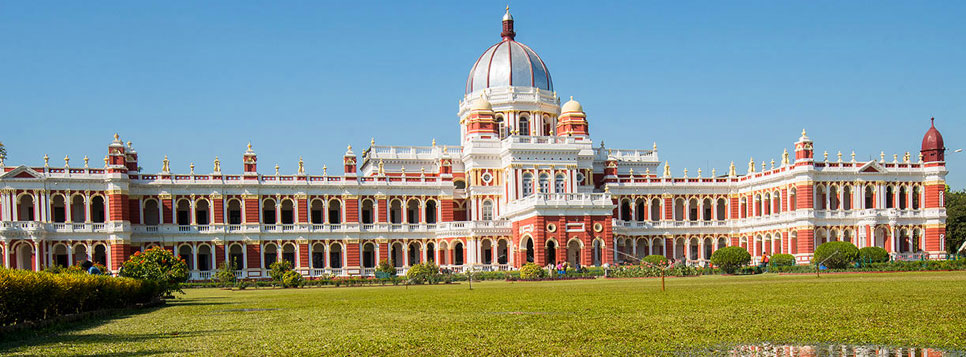Jaldapara Jeep Safari and a Visit to Cooch Behar Palace
By Tushar- [17/Jan/23] Nestled in the enchanting landscape of North Bengal, Jaldapara National Park unfolds as a haven for wildlife enthusiasts and nature lovers alike. This picturesque sanctuary, spanning over 200 square kilometers, is renowned for its population of the majestic Indian one-horned rhinoceros. As you explore its lush greenery, you may encounter various other species, including elephants, deer, and an array of avian wonders. The park's diverse flora adds charm, creating a captivating backdrop for a wildlife adventure. Beyond its rich biodiversity, Jaldapara also offers a unique experience with elephant safaris, providing a close and awe-inspiring encounter with the park's inhabitants. It is a testament to India's commitment to conservation and the coexistence of diverse species within its natural realms.
Jeep Safari- Embarking on a Jeep safari in Jaldapara National Park is an exhilarating journey into the heart of nature's sanctuary. The robust vehicles navigate through the park's diverse landscapes, offering visitors a front-row seat to the captivating wildlife that thrives within. As the Jeep winds its way through the dense forests and vast grasslands, the chance of encountering the majestic Indian one-horned rhinoceros, herds of elephants, and various species of deer becomes a thrilling possibility. The experienced guides accompanying the safari provide insightful commentary, enriching the adventure with information about the flora and fauna that grace the park. Jaldapara's Jeep safari not only promises an adrenaline-pumping experience but also creates lasting memories of an up-close encounter with the untamed beauty of the national park. To make the most of this adventure, enthusiasts can secure their spot through convenient Jaldapara Jeep Safari Booking . These bookings not only ensure a seamless entry into the park but also provide a front-row seat to witness the diverse wildlife that calls Jaldapara home.

Visit Cooch Behar Rajbari Down the Road of Jaldapara Safari
After spending an entire day admiring the wild beauties of Jaldapara National Park, the next morning plan a trip to Cooch Behar Palace, a royal gem of the neighbouring Cooch Behar District. The palace also referred to as Victor Jubilee Palace, was constructed in 1887 under the guidance of Koch King Maharaja Nripendra Narayan. Modeled after Buckingham Palace, this classic Western-style structure covers an area of 4766.8 sq.m. A portion of the palace has been transformed into a museum, becoming a prominent attraction in the region.
Originally a three-story brick-built edifice, the palace experienced significant damage from a powerful 19th-century earthquake, measuring 8.7 on the Richter Scale.
Architectural design- The palace features various halls and rooms, including the Dressing room, Bedroom, Dining hall, Billiard Hall, Library, Toshakhana, and more. Some rooms stand out for their exquisite ceiling and interior wall paintings. The Durbar Hall is a highlight, with its decagonal shape supported by four arches, Corinthian pilasters, and a projecting lantern reminiscent of St. Peter’s Church in Rome. The 124-ft tall metal dome ceiling showcases Renaissance architecture, adorned with intricate carvings and Corinthian columns. Surrounding the outer complex are lush green lawns, while the inner compound houses significant historical artefacts from the 1800s. Recognized by the List of Monuments of National Importance in West Bengal, the Cooch Behar Palace is an ASI-listed monument.
A brief history- Constructed in 1887 by Maharaja Nripendra Narayan, the Cooch Behar Palace stands as an architectural masterpiece, reflecting the opulent era of the Koch Dynasty in India. Currently owned by 'The Mantris,' the palace's history is intertwined with the rule of Nripendra Narayan and his younger brother, Jatindra Narayan, both sons of Maharaja Narendra Narayan.
Upon his father's passing when he was just a year old, Nripendra Narayan, as the eldest son, assumed the throne. Initially, he governed under a commissioner appointed by the Governor. However, in October 1862, he took direct control as the ruler and continued his reign until 18 September 1911. The construction of the Cooch Behar Palace took place 25 years after his accession to the throne, serving as his seat of rule.